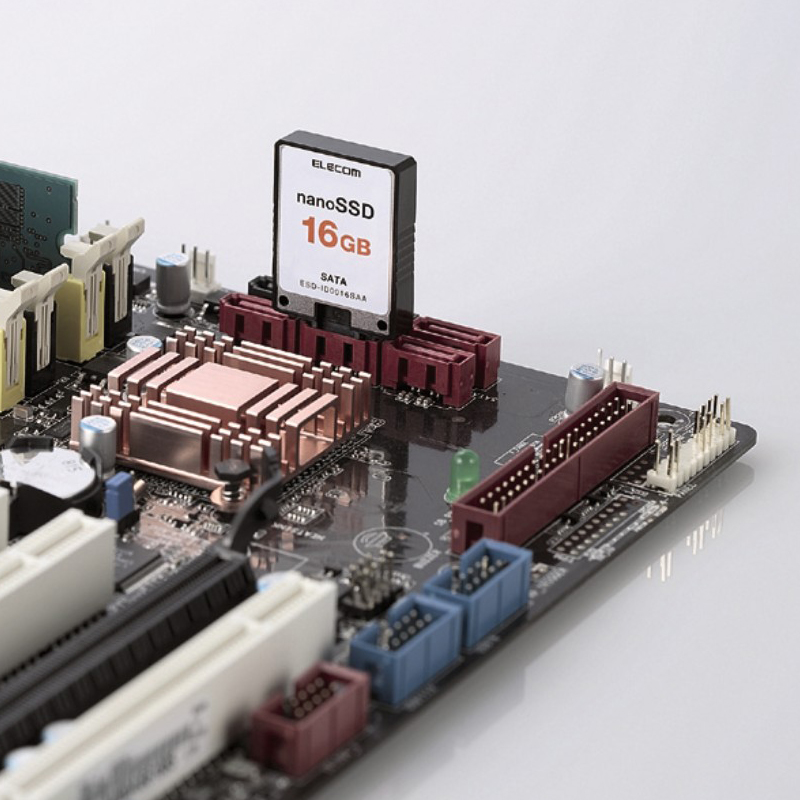NanoSSD Plugs Directly Into SATA Slot
Elecom Japan is launching two nanoSSDs in a few weeks that can plug into a SATA motherboard slot.
This seemed like utter coolness: an SSD that can plug directly into a SATA motherboard slot. Announced earlier today in Japan, Elecom's two new nanoSSDs--the ESD-IDSAA series--measures 25 x 39 x 6.5 mm, and could serve as a startup drive on a main system, or could even serve as a primary drive on a compact Mini-ITX system.
However, with the small size comes an even smaller storage capacity: 8 GB and 16 GB. Still, the drives offer decent read/write speeds, with read rates of up to 75 MB/sec. and write rates of up to 30 MB/sec. Unlike HDDs, the nanoSSDs feature minimal cooling requirements and are virtually quiet as a mouse.
The drives won't hit Japanese store shelves for another few weeks, and Elecom hasn't revealed pricing, however pre-orders are already underway. Akihabara News said that GeekStuff4U.com is scheduled to start selling the drives online in a couple of days.
Get Tom's Hardware's best news and in-depth reviews, straight to your inbox.

Kevin Parrish has over a decade of experience as a writer, editor, and product tester. His work focused on computer hardware, networking equipment, smartphones, tablets, gaming consoles, and other internet-connected devices. His work has appeared in Tom's Hardware, Tom's Guide, Maximum PC, Digital Trends, Android Authority, How-To Geek, Lifewire, and others.
-
exit2dos I don't see the point. Why don't they just use an eSATA connector and use these as external thumb drives?Reply -
dheadley I like the idea behind this but i think they should have tried to make them taller and skinnier as to match the connector and not block adjacent connector slots.Reply -
spectrewind cjlIt appears to be blocking the adjacent ports though...Reply
That's the fault of the engineer(s) who staged the port headers off the mainboard in this configuration. Stacking the ports vertically would likely solve this. -
B-Unit spectrewindThat's the fault of the engineer(s) who staged the port headers off the mainboard in this configuration. Stacking the ports vertically would likely solve this.What?!? The mobo came first, the direct connect drive should have been built to fit.Reply
